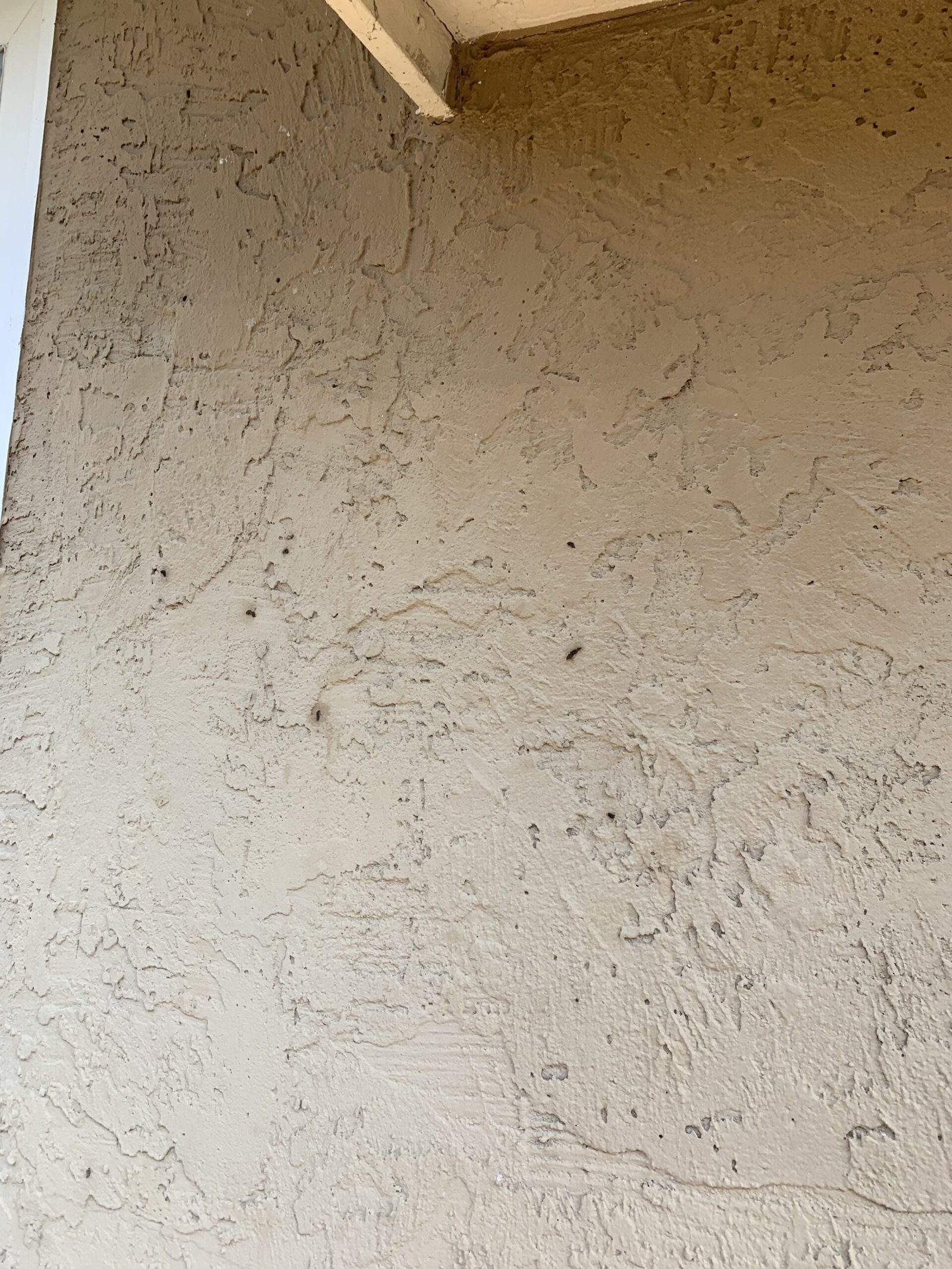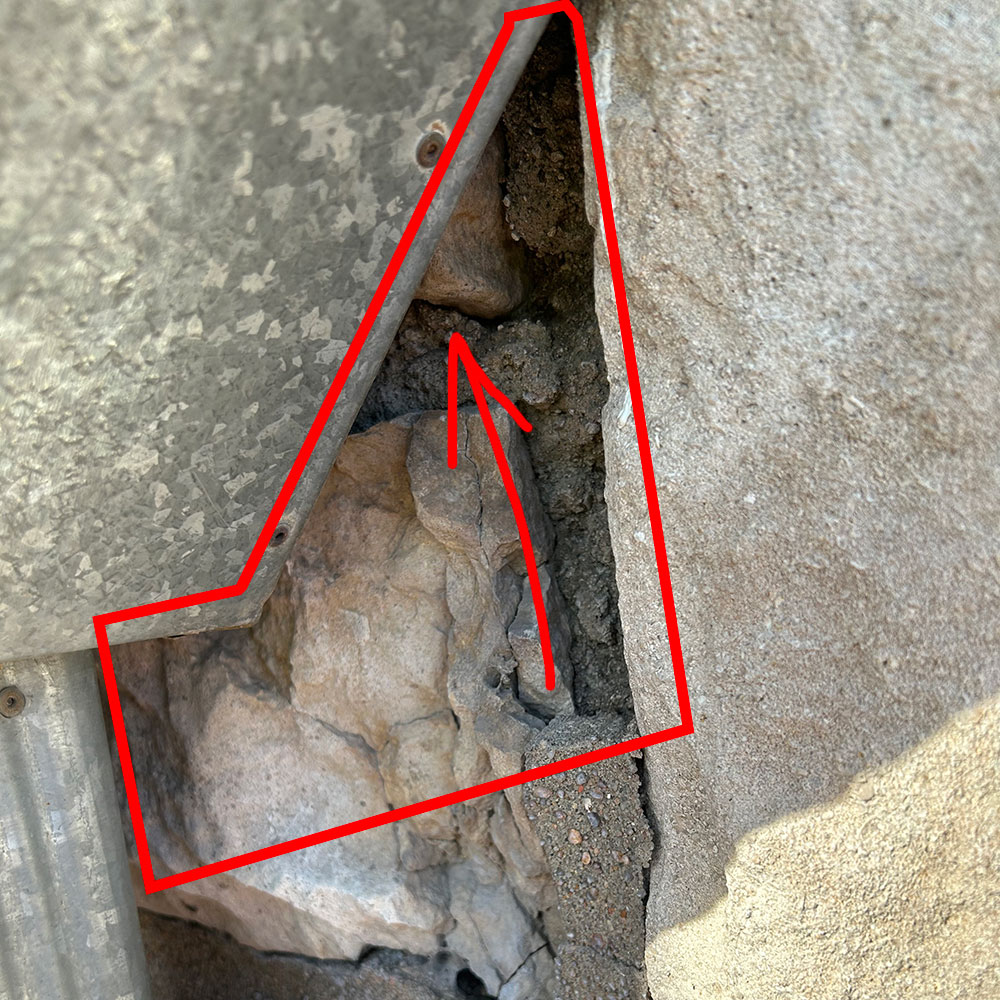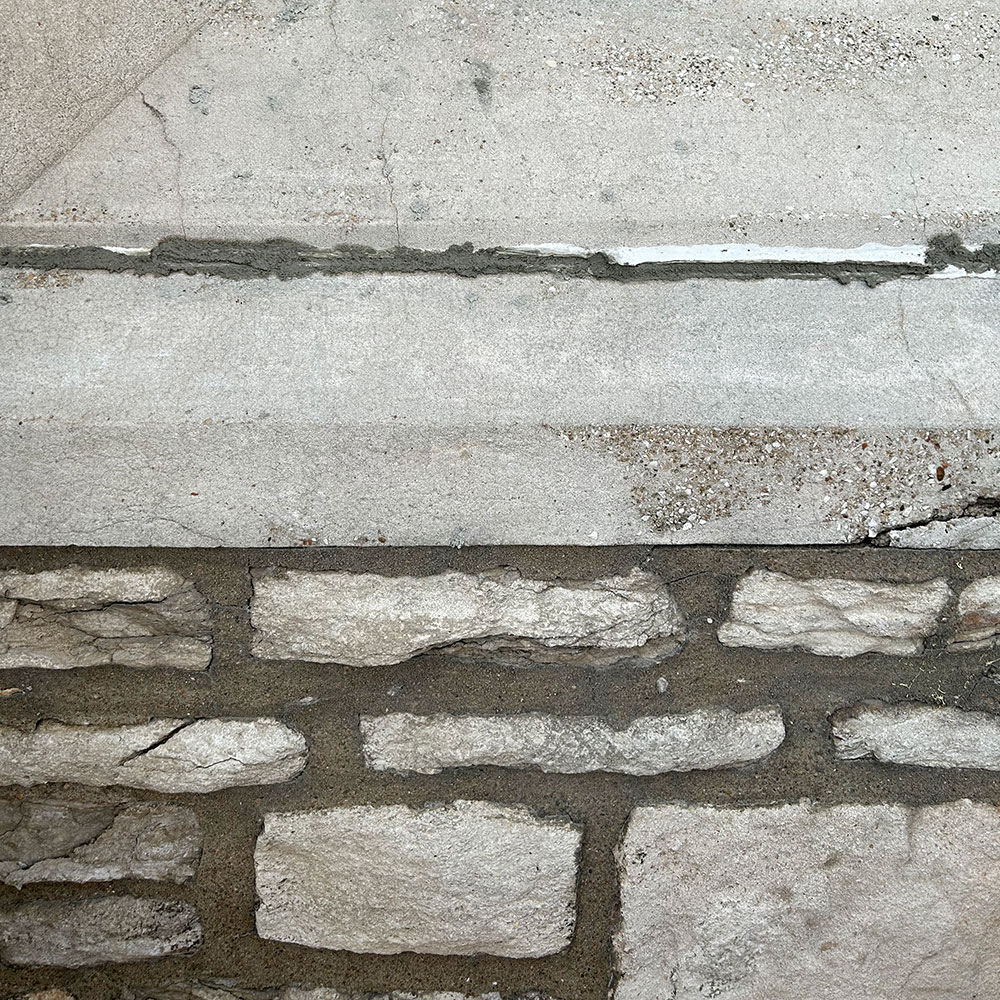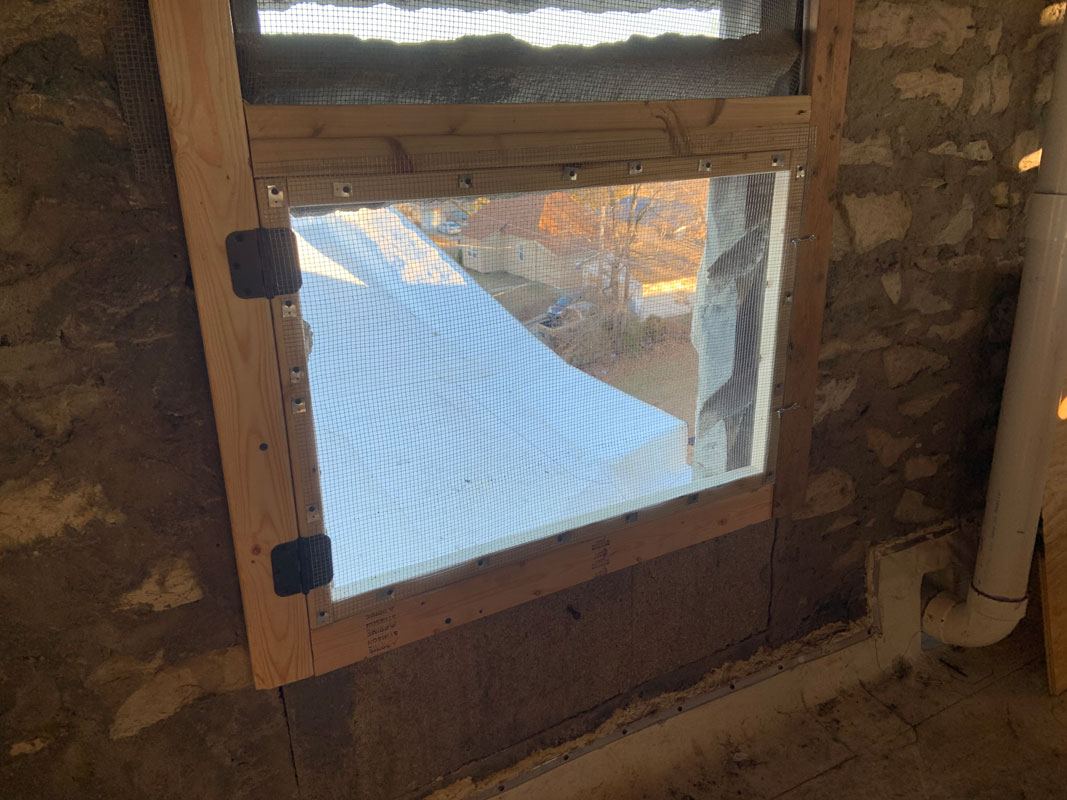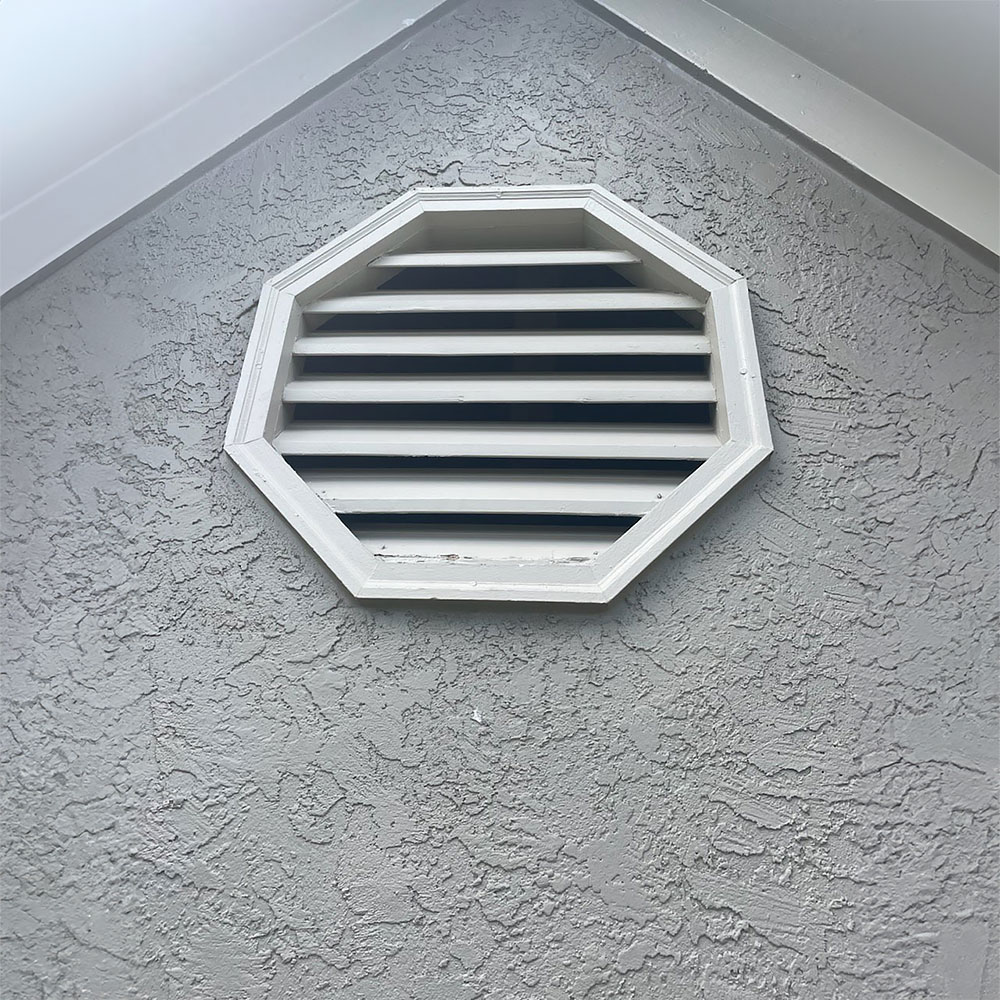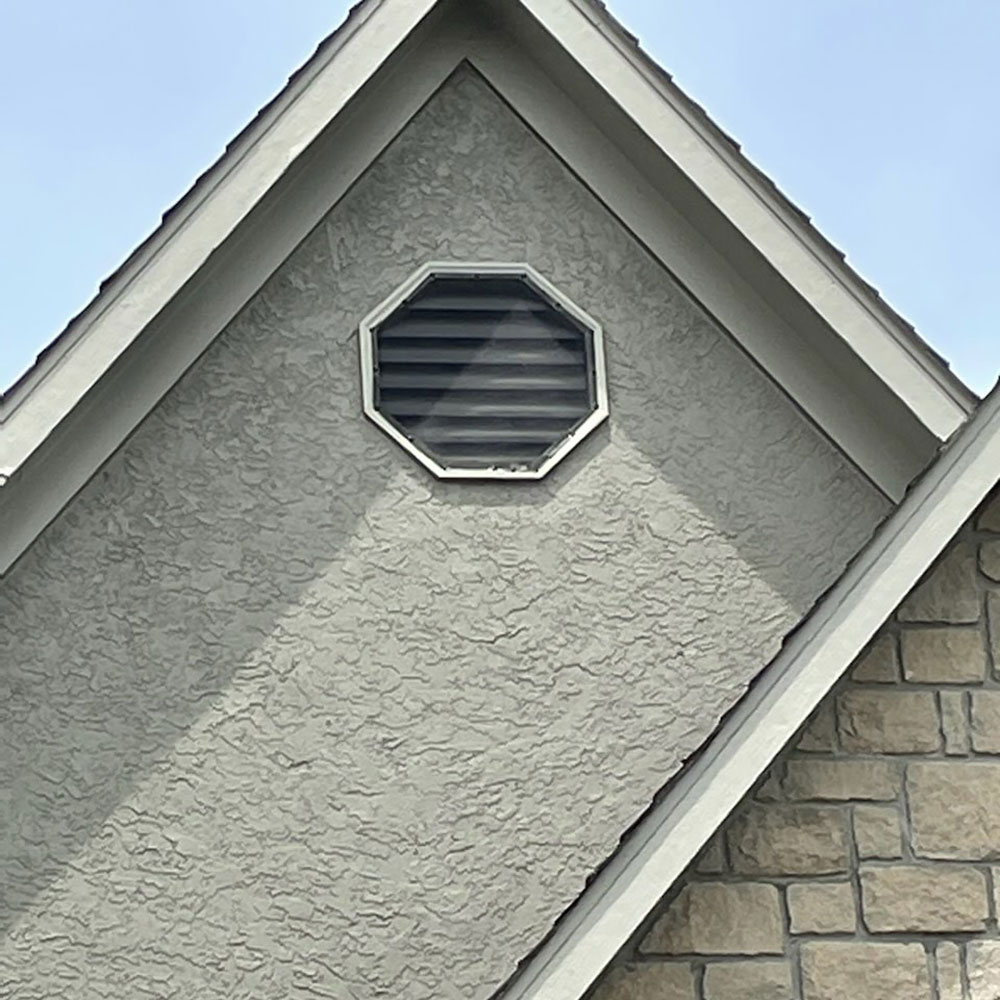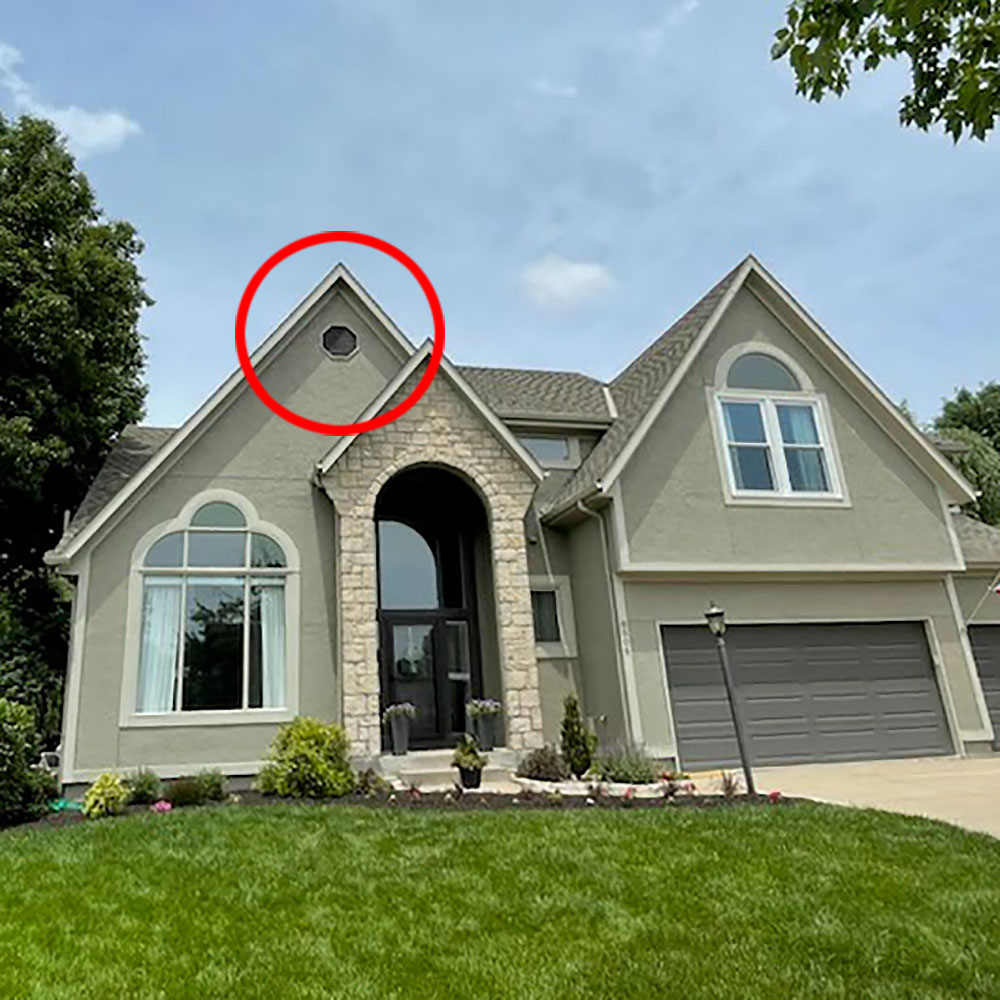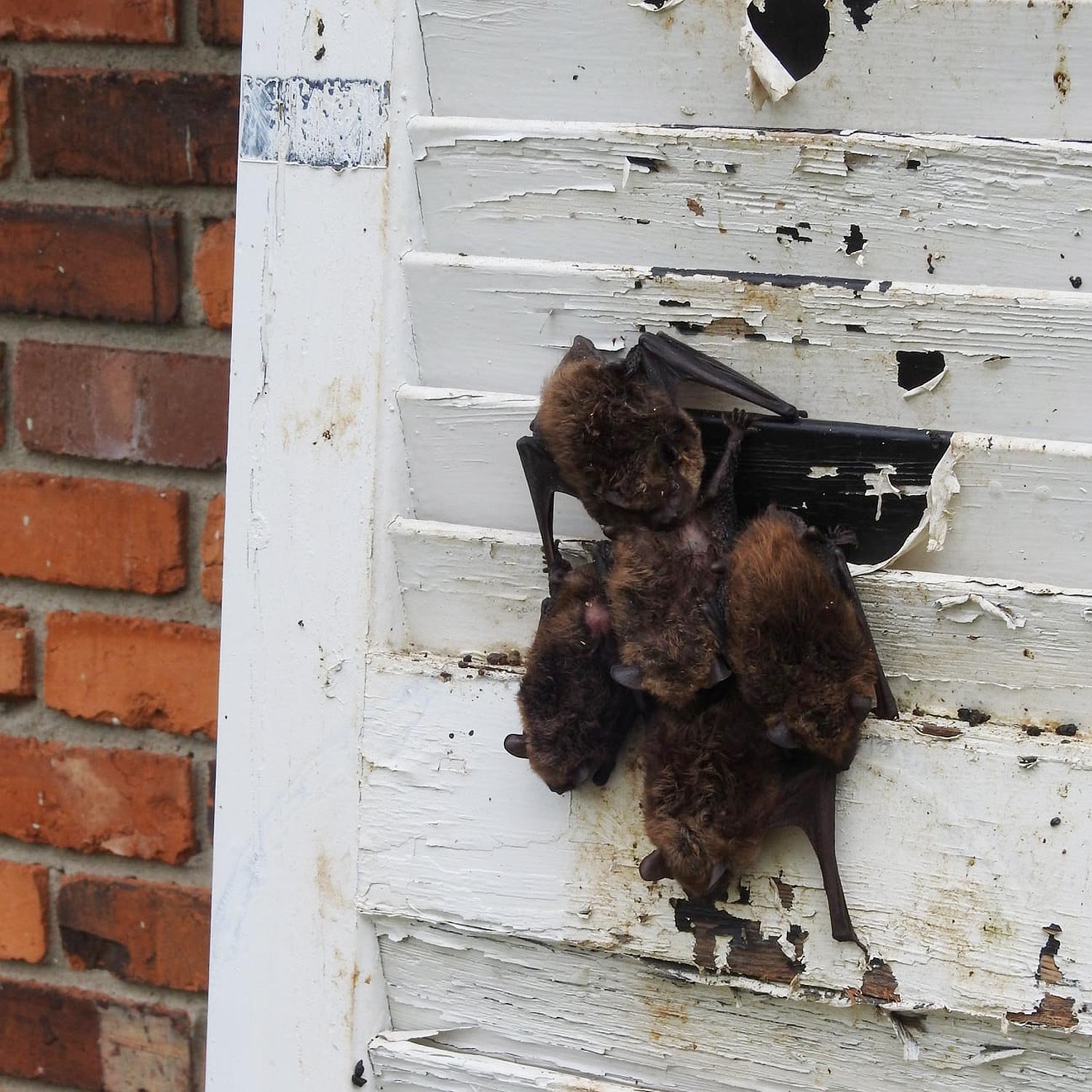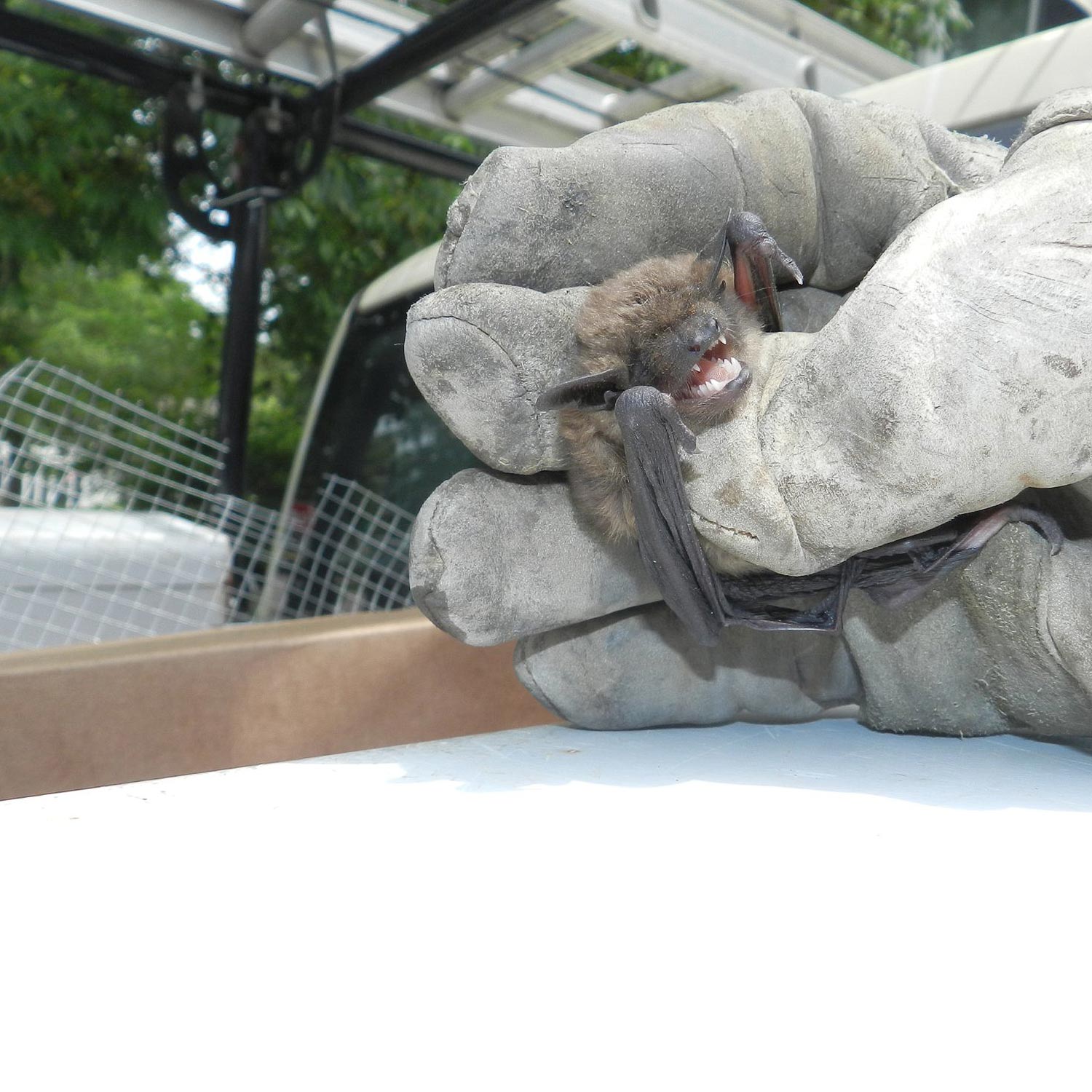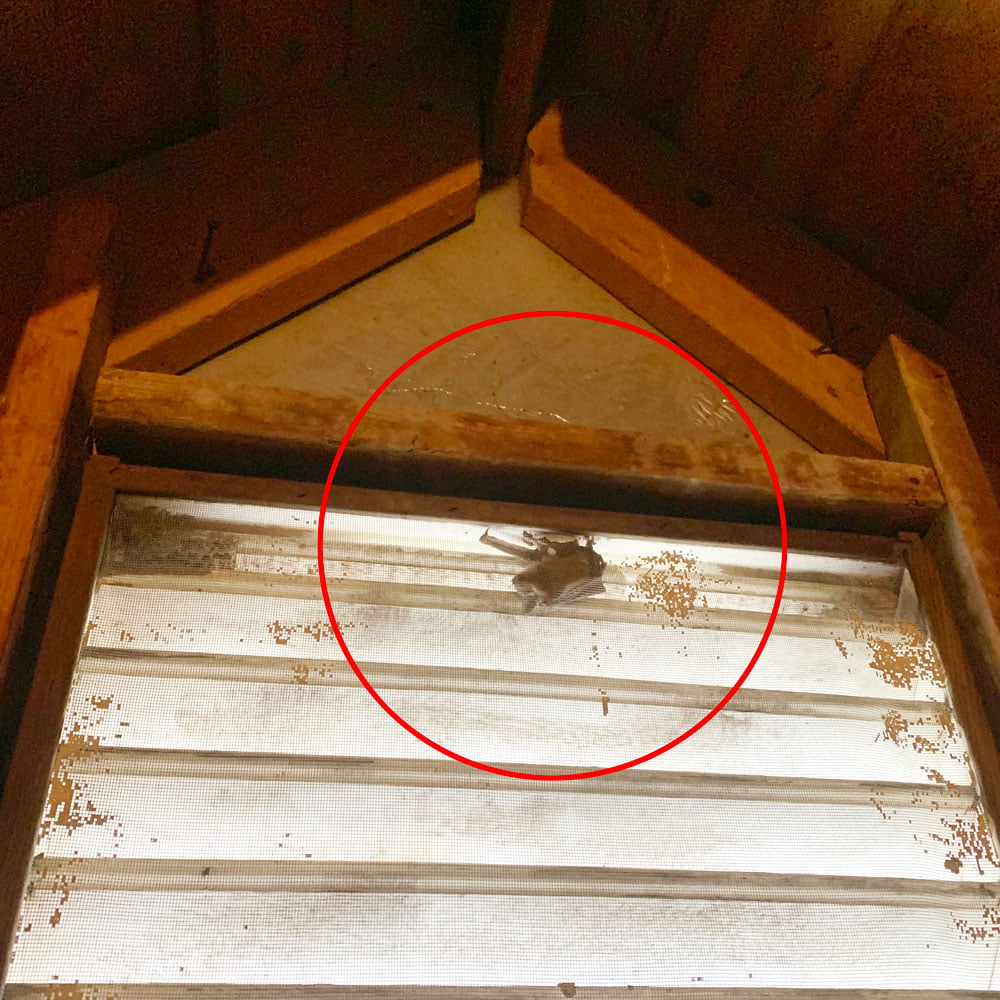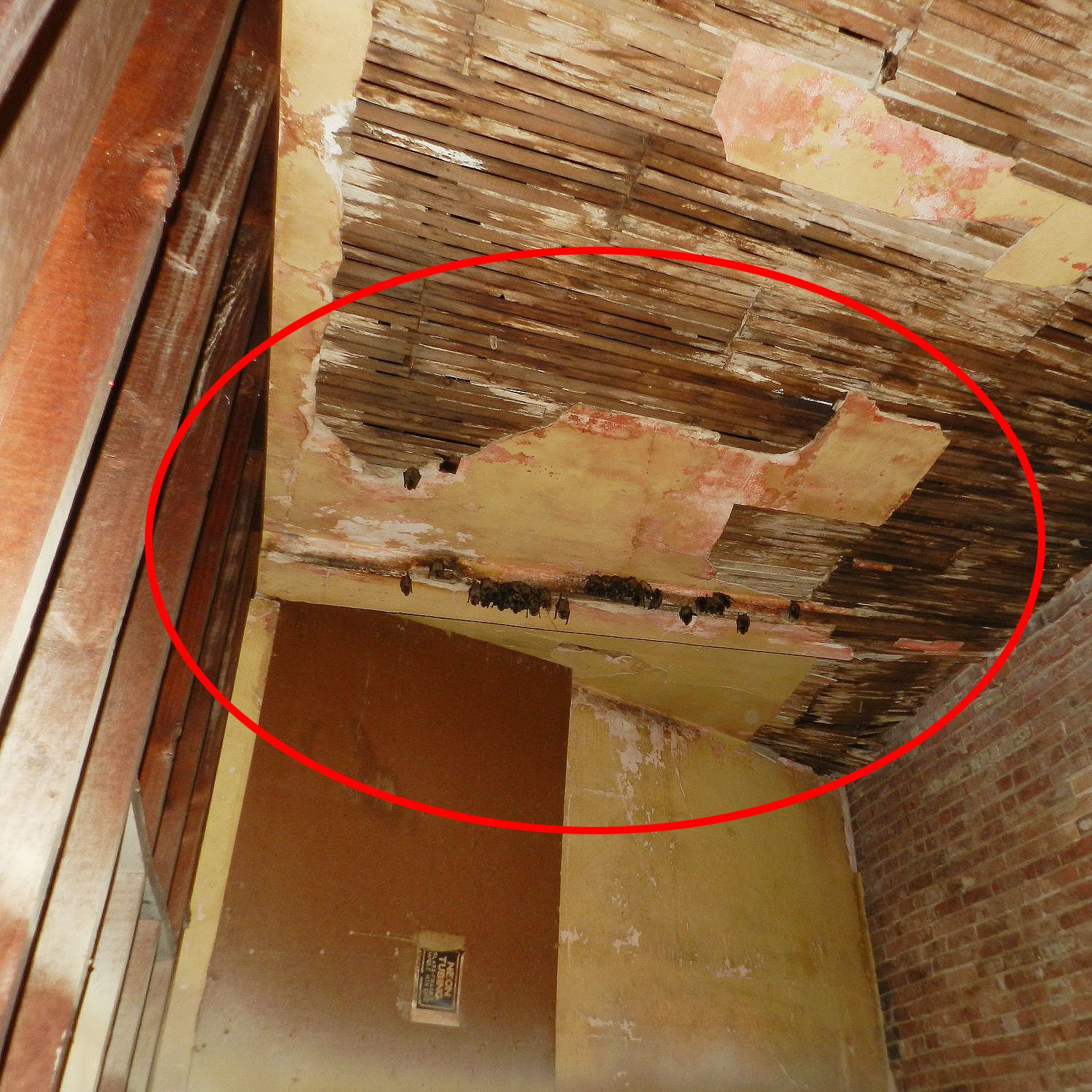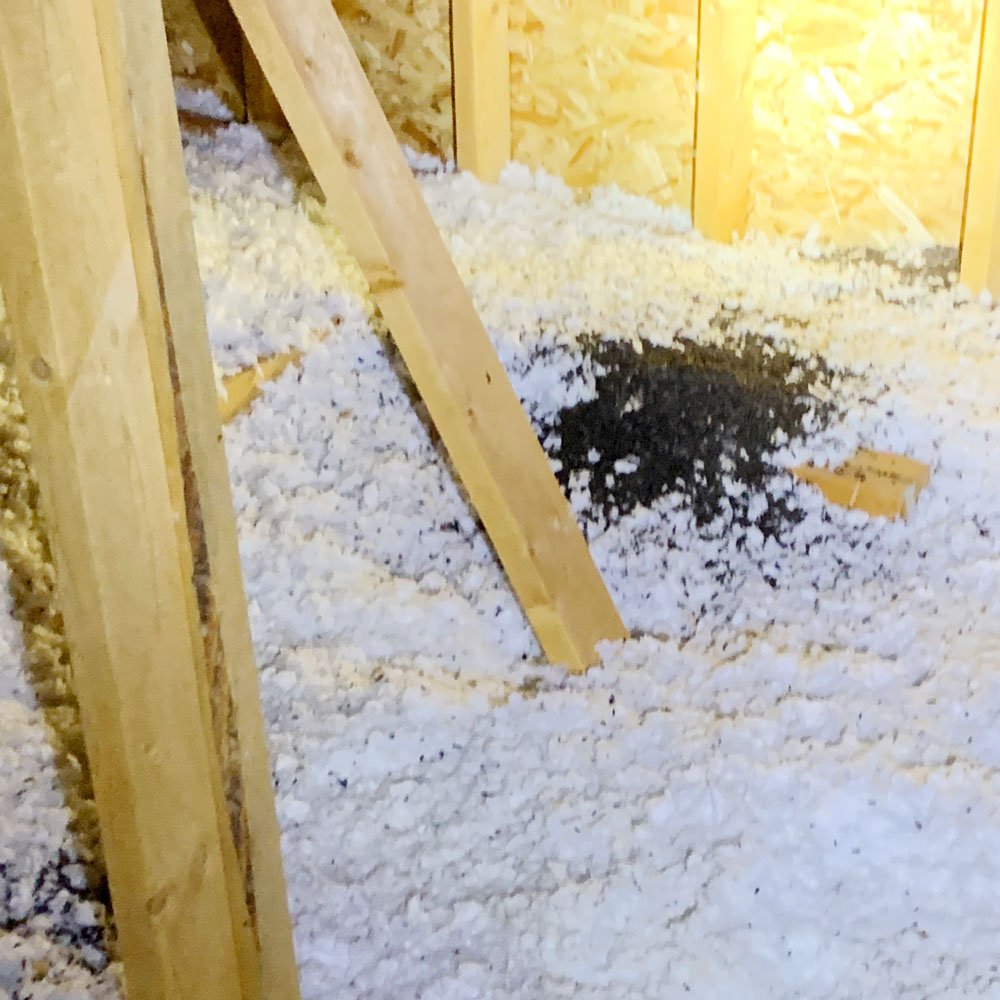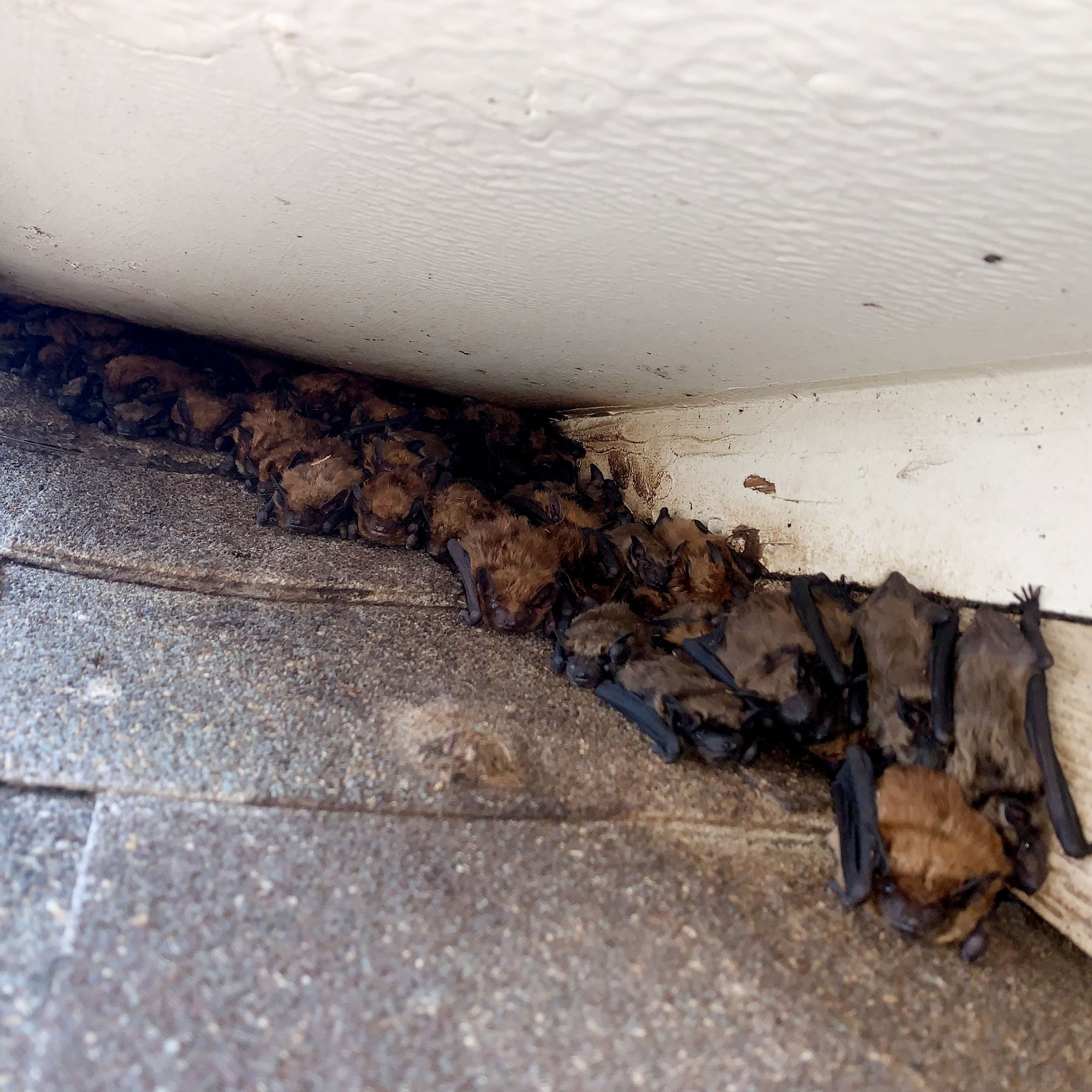This video is NOT stock art, we recorded the video of these bats flying around a Kansas City attic before we professionally and humanely removed them.
Looking for a Kansas City Bat Removal Service near me?
Read several stories about our commercial and residential bat removal and clean up services. We’ll find the entry points and safely relocate bats for good!
Missouri is home to 14 different bat species. Not all of them are here in the Kansas City area, but there are two species that are very common around Kansas City and are often the subject of our bat removal service – the Little Brown Bat and the Big Brown Bat. These are both known as ‘colony bats’, living in large groups situated in the high parts of buildings and inside chimneys. Sometimes these groups number in the hundreds or even in the thousands – depending on how long the colony has been growing. You might also find them living behind trim boards, behind shutters, inside vents or even under siding.
Bats do not care whether you own a home or a commercial property. They are such small creatures that they only need a 1/3 of an inch opening to access your attic or building! Bats love older properties that have large insect populations on the grounds. Even though bats can keep the insect population at bay, their own presence can cause just as many (if not more) problems.
Read more on this page about bats, the important role they fulfill in our local ecology, the risks of having them roost in your building, some of our local bat removal stories, and learn how we can safely, humanely, legally (bats are protected by federal law and cannot be killed), and professionally handle your bat problem for a fair price. Contact us today for a free estimate.
SOME STORIES
Lee's Summit: Bat Removal Story | Click to Expand
A homeowner in Lee’s Summit used an Unnamed National Franchise to remove bats from their attic in the summer of 2022. They received a one-year warranty. The bats were back in the summer of 2023 and when they called the Unnamed National Franchise, they were (correctly) told that bats cannot be removed during summer, and to call back in August (in the summertime bats are taking care of their young, and if the adults are locked out of the attic the babies will die for lack of care - trust us, you don't want hungry baby bats in your attic that are not being taken care of). When they called back to the Unnamed National Chain in August, they were told that their one-year warranty had just expired. Frustrated with the Unnamed National Franchise, they called us. We found the very small hole the bats were using (top left photo) – a clue was the little specks of bat guano on the wall of the house (see photo). We installed a one-way door to seal the hole and lock the bats out. When the bats were all out of the attic we then removed the one-way door and sealed the hole. Because bat guano is a hazardous material, we inspected the attic to see if the insulation needed to be replaced – but the good news is that the homeowners caught the bat problem soon enough that the insulation was OK and did not need to be replaced.
The moral of the story here? If you do not want to hire a national franchise, contact us - local professionals who have been in business since the 1980's. We live here, we work here, and we love the Kansas City area.
Kansas City, KS, Bat Removal from an Historic Church | Click to Expand
This bat job was in a beautiful Kansas City, KS, historic church built in the 1920s. The architecture was stone masonry, and due to the building's age the mortar was falling out (1st photo). In addition, sometime back in the 1940's or even 1950's a flat roof was installed and some stone was cut so gutters could be added. However, when the hole was cut for the gutter pipe, the hole was cut too large (2nd photo). Bats don't need much space to get in, and that particular hole, plus the cracks in the mortar, gave the bats more than enough room to get in. The bats loved this particular church attic so much that there was actually a nursery colony present. While this is great for keeping down the resident mosquito population around the church, it's horrible for the interior (attic) of the building as the bat guano built up. The church had been converted into several entities: a women's shelter, and the church. The last thing a women's shelter or church needs is the health hazards that come from bat guano and the risk of airborne histoplasmosis infection - and bats were found throughout the building. This was a custom and fairly extensive job - and one thing we'll mention here is that for sealing cracks we were using mortar, not foam. Watch out for businesses that use foam for these types of jobs - foam is quick, easy, and cheap. Yet foam looks bad, birds peck it, and bats chew it - foam is a bad solution. We use quality supplies, and in this case, it involved mixing and applying concrete mortar (3rd photo) -- our repairs don't come in a can. This particular job required a lift so that we could access the points for entry of the bats. Oh, and we also tuck-pointed all the cracks around the entire church (tuck-pointing is process to refinish and repair mortar joints - in essence, refreshing the mortar). Not only were we repairing mortar and fixing the hole behind the gutter, but we also built and installed a custom screen door in the bell tower (4th photo) -- because the little details on a job matter. Previous repairs by building staff or other wildlife removal companies had involved putting up a piece of wire mesh screen in the bell tower, but that wasn't good enough to keep the bats out: they had many other access points. In addition, putting a screen up blocked access by maintenance staff to the bell tower. Our technician created a custom little manual screen door that allows access to the bell tower while keeping bats out. We sealed up all the access points except for several primary points that the bats were using to gain access to the building. At these points we installed one-way doors (which allowed the bats to leave but not enter again). When all of the bats had been removed we then removed the one-way doors and did the final repairs. We then removed all the contaminated attic insulation and bat guano. Then we were then able to replace the attic with new attic insulation to the proper R-value. The end result? The bats were safely removed from the building. All health hazards were mitigated and fresh insulation was installed. The exterior of the building was properly sealed. And all of this resulted in a happy customer.
Overland Park, KS, Bat Removal from an Attic | Click to Expand
This Overland Park bat removal story is a common one. It started with a free attic inspection which confirmed the presence of bats. Our Wildlife Manager Wade found that the bats were accessing this home’s attic through the louvered vent in the front of the home (1st photo). Sometimes finding all the access points that bats are using can be tricky, as bats can squeeze through gaps as small as 3/8th of an inch (about the thickness of a number 2 pencil). While in this case the easy access point was the vent, our Wildlife Manager Wade ruled out other access points during his thorough home inspection of the soffits, fascia, roof valleys and the other roof vents. All attic vents should be screened to prevent access by insects, birds, bats, raccoons and squirrels. Most vents, if they are screened, are screened on the inside. Inside screening is generally OK, but bats will roost in the vent itself right up against the screen. They love to roost between the vent louvers during the day or to just digest their food after feeding at night. These areas are very protected from predators which is another attraction. Also the heat radiating from the attic is perfect for bats that love temperatures up to 104 degrees. This is a great average temperature for females to raise her pups. When bats are in a screened louvered vent, despite not technically being “in” the attic, their guano and urine will still be on the house. Because bat guano/urine is caustic, the result will be damage to the paint and siding of the house. Our experience in this area is one advantage to hiring a company that has been dealing with bats for decades, and this is why we prefer to install the screen on the outside of vents. At first most people balk at the idea of installing a screen on the exterior, but after they see the damage that animals can cause and the decorative screen that we use they fall in love with the function and the aesthetics (2nd and 3rd photos). The good news here is that the homeowner caught this problem early enough so it was not necessary to replace the insulation in the attic. And, we will take just a moment here to point out how we do business (i.e. our honesty and ethics): while we could have told the homeowner that the insulation needed to be replaced to get additional work for ourselves, that’s just not how we operate. We work hard during the day and we sleep well at night. We’ve been conducting attic inspections for decades and are experienced in what constitutes an infestation that is a health hazard. Just because bats have been in the attic doesn’t mean all of the insulation has to be replaced. We have chosen to build our business through honest work for a fair price, and in this case, there just wasn’t contamination in the insulation which would necessitate replacing insulation.
Leavenworth: Bats Entering BASEMENT Through a Broken Chimney | Click to Expand
Here's a bat removal job that we handled in Leavenworth, Kansas. The call came in the spring and when we arrived to inspect the home the bats already had pups (babies). We quickly found the access point: a damaged chimney crown. The bats were using this to access a heater vent and then getting down into the the homeowner's basement - which brings up an interesting point: bats don't always get into attics, it is not uncommon for them to suddenly appear in other parts of a home. Bats are an important part of our local ecology and are protected by law. We needed to find a way to protect the bats and their pups until the pups were mature and able to live on their own - but at the same time it's not really acceptable to have bats flying around this dear lady's basement. We installed a mesh screen in the basement so that the bats were contained to a small area and would not be flying around. A few months later the pups had matured and we installed one-way doors so that the bats could exit, but not re-enter, the home. Next we repaired the damaged chimney crown. This is an important part of what sets us apart from other bat control companies: we not only do repair work, but we do quality repair work. With other companies you often have to hire a contractor to handle repairs. The photo shows the repaired chimney crown. Later, we also installed a chimney cap, and it's too bad we forgot to get a photo of the final chimney!
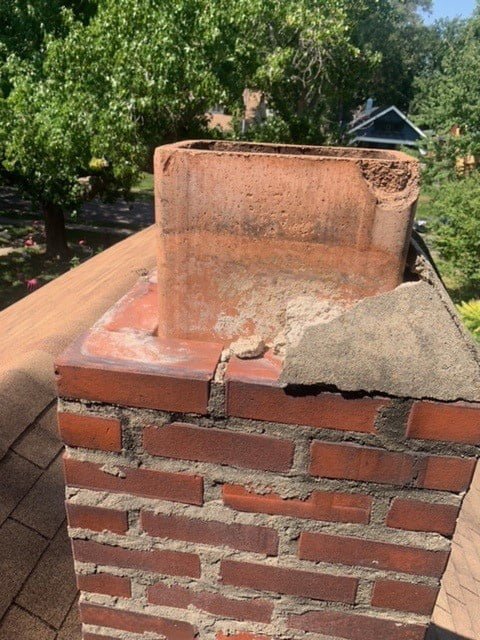
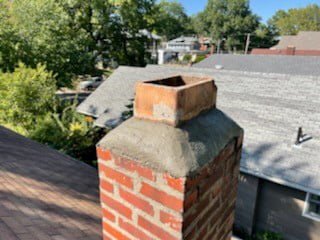
How do bat control services work?
We are approved bat exclusion experts – our company has been approved by Bat Conservation International since 1999, the world’s leading non-profit organization dedicated to controlling the bat population.
If you have a bat colony in your building or on your property, Catch-It Wildlife & Pest Control can perform bat removal services that can permanently remove the problem. The first step involves identifying every point that the bats use or may eventually use to gain entry. Remember, bats need less than 1/2 inch of space to gain access – so our inspection is quite thorough. After we have identified these access points, we block them using a number of different materials from caulk to grates to screens.
We then install a one-way ventilation system which allows the bats to leave the area in one direction but not return. This must be done carefully so the bats do not simply find another way to get back in.
Why Remove Bats? First, Bats Carry Diseases
Although bats are beneficial to humans in many ways and Little Brown Bats and Big Brown Bats are not necessarily dangerous, they pose a health risk if proper precautions are not taken. Bats can carry diseases like rabies and bat guano (droppings) is classified as hazardous material as it can contain spores from fungal organisms that cause histoplasmosis, a potentially fatal respiratory infection.
Histoplasmosis spores can enter a person’s body through their lungs or tear ducts. This is an important reason why you should address any bat problems immediately, and do so carefully. As a professional bat exclusion service here in the Kansas City area, we at Catch-It Wildlife use specially designed equipment to ensure our technician’s safety.
Bats also often bring parasites into buildings with them such as bat bugs, which can spread quickly throughout an area.
“Histoplasma capsulatum, an environmental fungus, is the most common endemic pulmonary mycosis in the USA… Infection with Histoplasma capsulatum causes significant morbidity and mortality worldwide. This fungus is a dimorphic ascomycete that grows in its hyphal form in soil and bird and bat guano.“
Bats Can Cause Structural Damage
Another reason that our bat removal service is quite popular is because bat colonies can cause a lot of structural and cosmetic damage to your property. Each day, a Brown Bat will expel an amount of waste equal to its own weight. Over a period of time, this guano can build up and adds significant weight to the structure, not to mention causing offensive odors and potentially spreading that nasty fungus called histoplasmosis.
After Removal Support
After we’ve removed all the bats from your property we will help protect your home from future infestations by sealing potential entry points and removing bat feces guano removal) in affected areas.
We also inspect your attic to determine whether further remediation is necessary to remove or replace hazardous/infected material.
Another benefit to calling us is that we provide quality repair services related to wildlife animal control and remediation. If repairs are needed, you don’t have to hire a repair contractor to come in and complete repairs: we can handle it!
DIY Bat Removal?
There are some do-it-yourself methods for bat removal, but be careful due to the health risks to yourself, as well as the potential harm that can be caused to the bats, because let’s not forget that the goal here is to remove bats, not kill them. Bats are protected by federal law (it is illegal to kill them) and are very helpful for insect control in the environment.
Why use Catch-It for your Bat Removal Project?
- Removal of bats requires knowledge about their biology and habits to ensure humane treatment.
- Proper safety gear is important to help protect against exposure to diseases such as histoplasmosis and rabies when attempting to remove bats.
- After the bat population has been removed from your building or property, we can use our equipment to ensure that the area is properly cleaned. We use filtered masks, airtight suits, air filters and industrial vacuums to clean guano out of attics and other areas. Not only does this process clean up the guano left by a bat population, but it also cleans the remaining urine and removes any dead bats that were left behind.
Contact us online or call (816) 769-3106 – we will respond to your message!
Let's Connect
Hi there, I'm Steve, the Owner of Catch-It, and I personally handle all incoming inquiries from the website. If you have a question or need help, send me a message via the form below and I'll be in touch with you soon (often the same day). If your query is urgent, please give us a call at (816) 769-3106.


